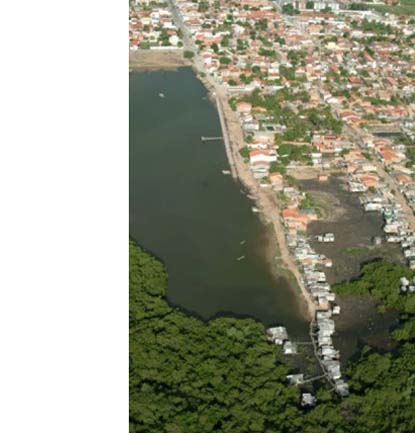The dwellers of the community of Coroa do Meio (Aracaju/Sergipe – Brazil) had their 600 blockhouses returned, after the urbanization project in an area close to the beach and to the central area of the City of Aracaju. The area was owned by the Union’s assets and was an Environmental Preservation Area.
The area was a plot of land of medium to high income value, which was not fully developed. Low income families started occupying it, mainly near a swamp area, favourable for fishing, which was their means of livelihood. There were several attempts to remove them, but after much community mobilization, the dwellers achieved physical and social improvements to the neighbourhood by means of the “Moradia Cidadã” Programme. This was made possible with municipal and federal support, university advisors and financing from Caixa and Inter-American Development Bank. Before the commencement of the project, the families were registered. During the project work, the Municipality paid the rent; and after their return, follow-up for programmes for social integration and sustainability of housing were implemented.
This example was taken from the Bank of Agrarian Regularization Experiences in Brazil, of the Urban Programs Department of the Ministry of the Cities, Brazil (www.cidades.gov.br/secretarias-nacionais/programas-urbanos/biblioteca/regularizacao-fundiaria/experiencias-de-regularizacao-fundiaria-no-brasil/se/Coroa.pdf)
Photo: Aracaju City Hall, SE – Brasil


Leave a Reply